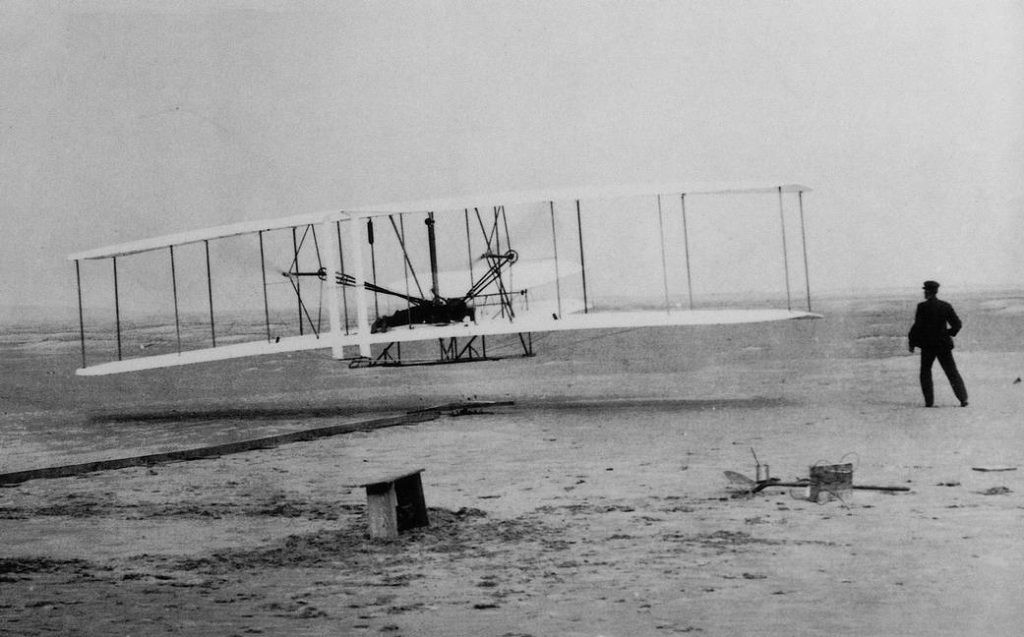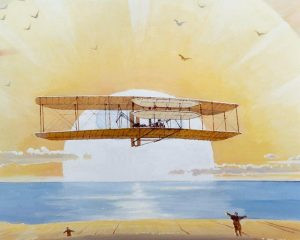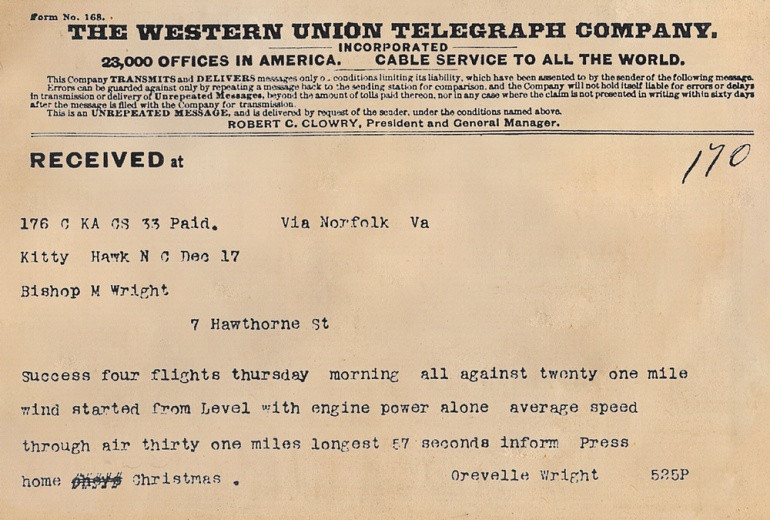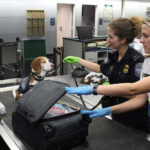On December 17, 1903, history was made on the sandy dunes of Kitty Hawk, North Carolina. This was the day the Wright brothers, Wilbur and Orville, achieved the seemingly impossible: sustained, controlled, powered flight in a heavier-than-air machine. Their creation, the Wright Flyer, marked the dawn of the aviation age and forever changed the world. But exactly when did the Wright brothers fly their first airplane, and what were the details of this groundbreaking event?
The answer is December 17, 1903. This date is etched in history as the day humanity first took to the skies in a powered aircraft thanks to the ingenuity and perseverance of Wilbur and Orville Wright.
 The Wright Flyer Airborne
The Wright Flyer Airborne
The morning of December 17th was cold and windy, conditions that might deter many, but for the Wright brothers, it was the culmination of years of research and experimentation. They had chosen Kitty Hawk specifically for its consistent winds, ideal for their experiments with gliders, which paved the way for their powered flight attempts. In fact, in 1902 alone, they had conducted over 700 glider flights at this very location, meticulously refining their understanding of aerodynamics and control.
That day, four flights were made in total. Orville Wright piloted the first flight, which lasted a mere 12 seconds and covered a distance of 120 feet (some sources state 180 feet, likely due to slightly different measurement interpretations). While short by modern standards, this flight was monumental. It definitively proved that powered, sustained flight was achievable.
Later that day, Wilbur Wright took to the controls for the longest flight of the four, staying airborne for 59 seconds and traveling 852 feet. Each flight built upon the last, demonstrating increasing control and distance. These flights weren’t just leaps of faith; they were the result of meticulous calculations, wind tunnel testing, and a deep understanding of aeronautical principles that the Wright brothers had painstakingly developed.
The Wright Flyer itself was a biplane constructed from spruce and muslin, powered by a custom-built gasoline engine. This engine, designed and built with the assistance of their mechanic Charlie Taylor, was crucial to their success. It was a lightweight yet powerful engine for its time, producing around 12 horsepower. Interestingly, the engine lacked a throttle and ran at full speed, controlled by adjusting the camshaft timing. This engine powered all four flights on that historic day.
 Courtesy of NASA. Bob McCall
Courtesy of NASA. Bob McCall
Despite their groundbreaking achievement, the initial reaction to the Wright brothers’ success was surprisingly muted. While they did inform the press, only a few local newspapers covered the event. Many were skeptical of their claims, as the idea of powered human flight was still considered fantastical by many. It took time for the world to fully grasp the magnitude of what the Wright brothers had accomplished on that windy December day.
Interestingly, a few days prior, on December 14th, the Wrights had attempted a flight which resulted in a crash landing after 3.5 seconds in the air, damaging the Flyer. A coin toss determined that Wilbur would pilot this first attempt. After repairs, Orville was at the controls for the successful first flight on December 17th, thus earning him the distinction of piloting the first sustained flight.
The Wright brothers’ journey to that first flight was a fascinating one. Before their aviation pursuits, they were involved in other ventures. They owned a local newspaper, the West Side News, and later ran a successful bicycle repair and manufacturing business. Their interest in flight was ignited by a toy helicopter their father brought them in 1878, a model inspired by the work of French aviation pioneer Alphonse Pénaud.
The impact of the Wright brothers’ first flight is immeasurable. Within just sixty years of Orville’s flight at Kitty Hawk, humanity had reached the Moon. The advancements in aviation in the century following their achievement have been staggering, from fighter jets and commercial airliners to space shuttles. The world we live in today, connected and explored by air, owes its origins to that pivotal moment on December 17, 1903, when the Wright brothers first flew the airplane.
Even a simple telegraph message sent by the Wright brothers to their father announcing their success contained a minor error, misspelling Orville’s name, and initially misreporting the flight duration. This detail underscores the humble beginnings of an invention that would revolutionize the 20th and 21st centuries.
 Telegraph sent by the Wright brothers to their father.
Telegraph sent by the Wright brothers to their father.
In conclusion, the Wright brothers flew the first airplane on December 17, 1903, at Kitty Hawk, North Carolina. This date marks the beginning of powered human flight and the realization of a dream that had captivated humanity for centuries. Their pioneering spirit and dedication laid the foundation for modern aviation and forever changed our world.
